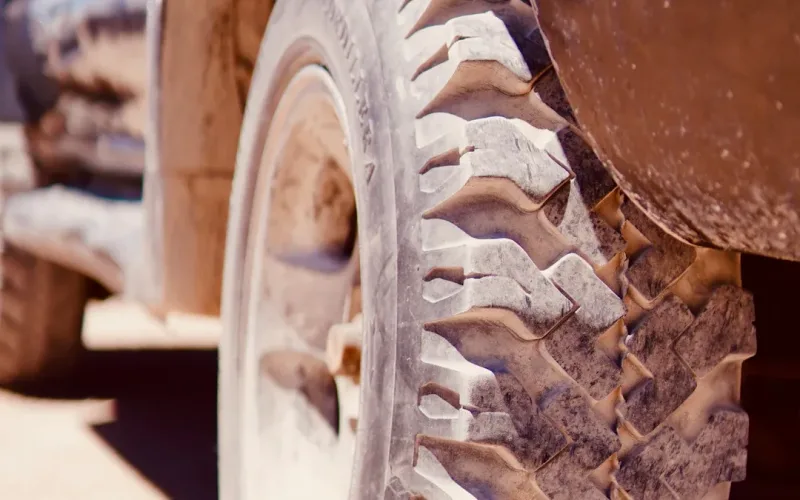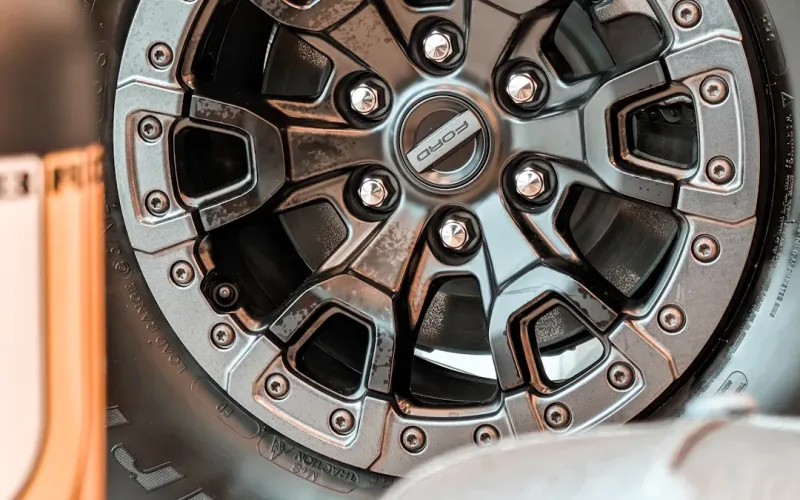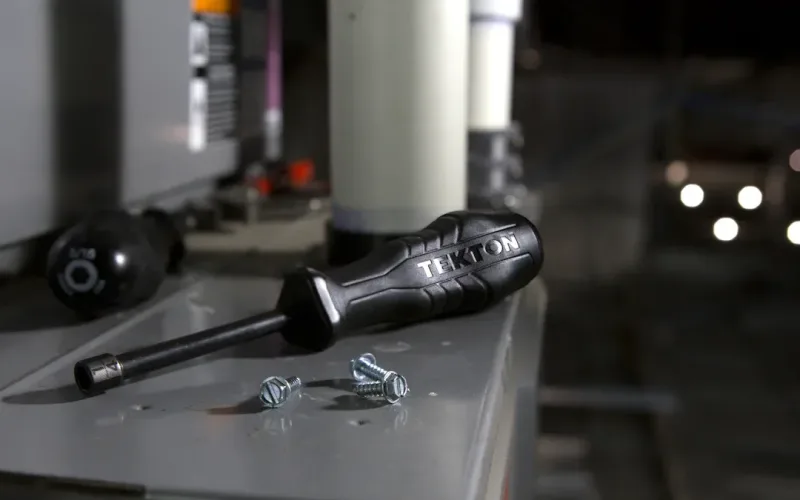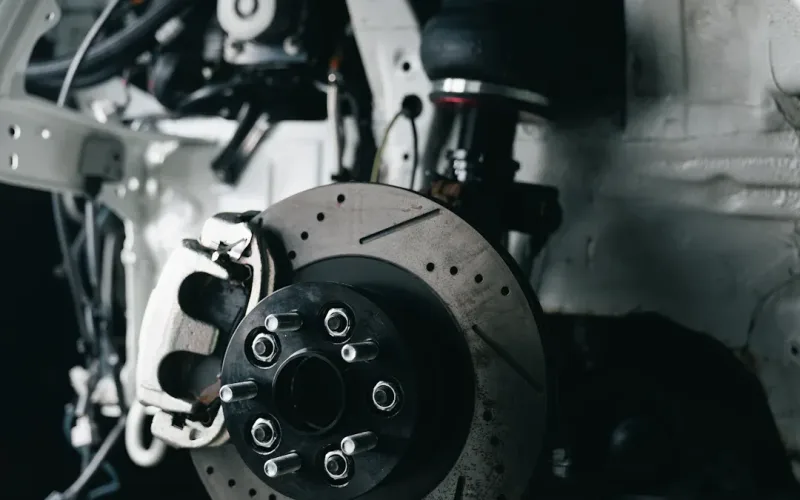

admin1
July 27, 2025
Understanding the Tire Valve Core Key Functions and Maintenance

You depend on your tire valve core every time you check or adjust tire pressure. This small part sits inside the valve stem and controls how air moves in and out of the tire. When you inflate a tire, the tire valve core lets air in but blocks leaks. A working tire valve core keeps tire pressure steady and helps prevent flats. If the valve stem or tire valve core fails, you risk losing pressure, which can lower tire safety and shorten tire life. Regular checks help you keep the right pressure and protect your tires.
Tire Valve Core Key Functions
Maintaining Tire Pressure
You rely on the tire valve core to keep your tire pressure at the right level every day. This small, spring-loaded part sits inside the valve stem and acts as a one-way gate. When you use tire inflators or an air compressor, the valve core lets air enter the tire. Once you finish inflating, the valve core seals tightly, trapping the air inside. This seal keeps your tire inflation pressure steady, which helps your tires last longer and keeps your vehicle safe.
The valve core works with the valve stem and cap to hold air in the tire. If any of these parts fail, you may lose tire air pressure. Low pressure can cause uneven tire wear, poor fuel efficiency, and even make your car harder to control. Regular monitoring of tire pressure, especially with a tire pressure monitoring system, helps you spot problems early. Tire pressure monitoring sensors also depend on a good seal from the valve core to give accurate readings.
Tip: Always check your tire pressure with a reliable gauge. Replace the valve core when you change or repair tires to keep your tire air inflation pressure at the right level.
Preventing Air Leaks
The valve core is the main barrier that keeps air from leaking out of your tire. It fits snugly inside the valve stem and uses a spring-loaded pin and seal to block air from escaping. When you press the pin, air can move in or out. When you release it, the seal closes and holds the pressure inside.
Valve cores are designed to handle high pressure—up to 300 psi in some cases. They use strong materials like nickel-plated brass to resist corrosion and last longer. The valve cap adds another layer of protection by keeping dirt, sand, and moisture away from the valve core. If you leave the cap off, grit can get inside and damage the seal, leading to slow leaks.
- Valve cores are easy to replace if they start to leak.
- Using a valve cap with a rubber O-ring helps keep the seal airtight.
- Parking in shaded areas and keeping the valve stem covered can protect the valve core from UV rays and heat.
If you notice your tire losing pressure, check the valve core first. A faulty valve core can cause slow leaks that are hard to spot without regular monitoring. Replacing a worn or damaged valve core is a simple way to prevent bigger problems and keep your tire pressure stable.
Supporting Inflation and Deflation
The design of the tire valve core makes it easy for you to add or release air as needed. During inflation, the air pump pushes against the pin inside the valve core, opening the seal and letting air flow into the tire. When you stop inflating, the spring pushes the pin back, sealing the tire and holding the pressure.
When you need to lower the pressure, you can press the pin to let air escape. This feature helps you adjust tire pressure for different driving conditions, like off-roading or carrying heavy loads. The valve core allows you to make quick, precise changes to tire inflation pressure, which is important for safety and performance.
Modern vehicles often use a tire pressure monitoring system to track tire pressure in real time. These systems rely on the valve core to keep the tire sealed so the sensors can give accurate readings. If the valve core leaks, the tire pressure monitoring sensors may show a warning, alerting you to check your tires.
Note: Always use the correct tools when inflating or deflating your tires. Avoid over-tightening the valve core, as this can damage the seal and cause leaks.
By understanding how the tire valve core works, you can keep your tire air pressure at the right level, prevent leaks, and make sure your tires perform their best. Regular monitoring and simple maintenance help you avoid problems and stay safe on the road.
How the Tire Valve Core Works
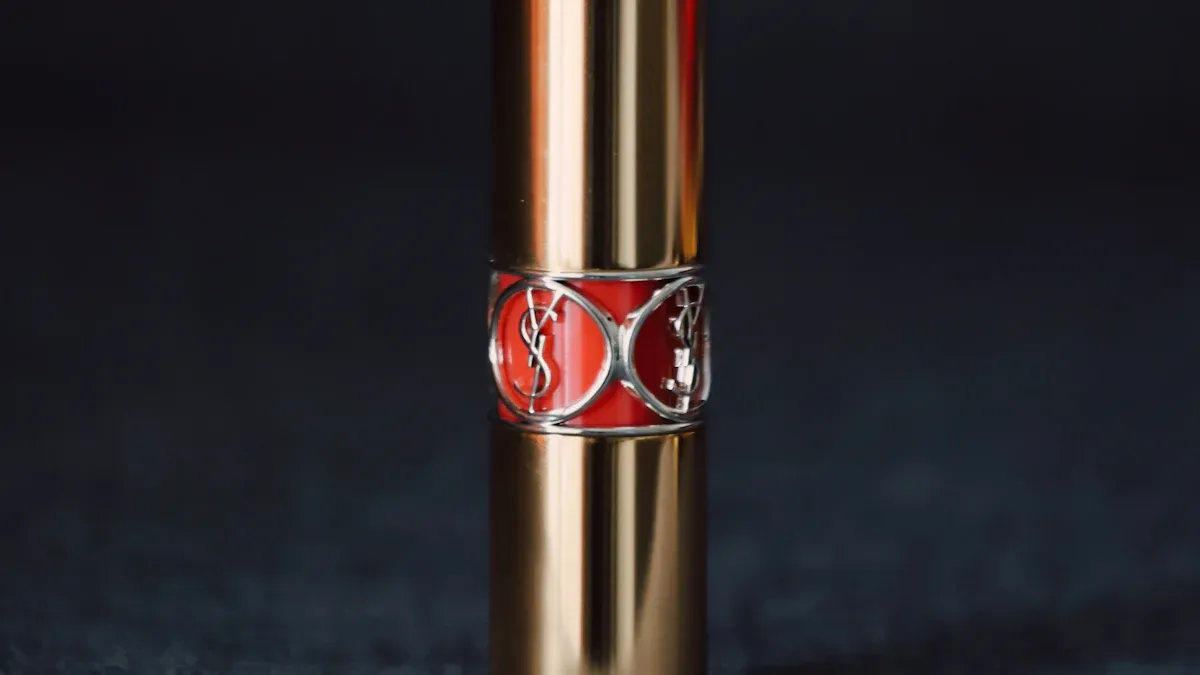
Operation During Inflation
When you inflate your tire, the tire valve core plays a key role in controlling air flow. You attach an air pump or compressor to the valve stem. The pump pushes against the pin inside the valve core. This action opens the seal and lets air enter the tire. As air flows in, the pressure inside the tire rises. You can watch the pressure gauge to make sure you reach the correct tire inflation pressure.
Once you stop inflating, the spring inside the valve core pushes the pin back into place. This closes the seal and traps the air inside. The valve core keeps the pressure steady by blocking any air from escaping. You depend on this process every time you add air to your tires. It helps you keep your tire pressure at the right level for safe driving and even tire wear.
Tip: Always check your tire pressure after inflating. Use a reliable gauge to confirm you have reached the recommended level.
Operation During Deflation
Sometimes you need to lower your tire pressure, such as when driving on sand or rough terrain. The valve core lets you release air in a controlled way. You can use a deflator tool or even a small object to press the pin inside the valve core. This opens the seal and allows air to escape.
Here is a step-by-step process for deflating a tire using a deflator tool:
- Screw the deflator onto the valve stem.
- Turn the deflator knob counterclockwise to unscrew and remove the valve core.
- Slide the collar up to release air from the tire.
- Slide the collar down to stop airflow or check pressure.
- Screw the valve core back into the valve stem.
- Remove the deflator and replace the valve cap.
Some advanced valve stems, like the Apex Designs RPV, let you deflate the tire without removing the valve core. You slide a gate cover to release air and use a built-in gauge to monitor pressure. This design helps you avoid losing small parts and makes pressure adjustments faster.
You should always monitor the pressure during deflation. Use a gauge to make sure you do not let out too much air. When you reach the desired pressure, screw the valve core back in and replace the valve cap. This keeps your tire air pressure at a safe level and protects the valve core from dirt.
Sealing Mechanism
The sealing mechanism inside the tire valve core keeps your tire airtight. The valve core uses a spring-loaded pin and a special seal to block air from escaping. The seal must handle high pressure and changing temperatures. Engineers use advanced materials to make sure the seal stays strong and flexible.
| Application Area | Material Used | Key Properties Relevant to Airtightness and Sealing |
|---|---|---|
| Tire valve seals | Fluorine elastomers | Excellent chemical resistance, temperature tolerance, and sealing capabilities |
| Shaft sealing | Fluorine elastomers | High chemical resistance and durability |
| Valve gaskets | Fluorine elastomers | Effective sealing under varying temperature and chemical exposure |
Fluorine elastomers, such as A-type FKM, are common in tire valve seals. These materials resist chemicals and heat, so the seal stays tight even in tough conditions. Rubber lubricants on the bead and rim help create an airtight fit during tire assembly. This combination of materials and design keeps your tire pressure stable and prevents leaks.
The valve core, valve stem, and valve cap all work together to keep the seal strong. You should always check these parts during regular tire maintenance. A good seal means your tire holds the right pressure, which helps you drive safely and extends tire life.
Tire Valve Core Maintenance
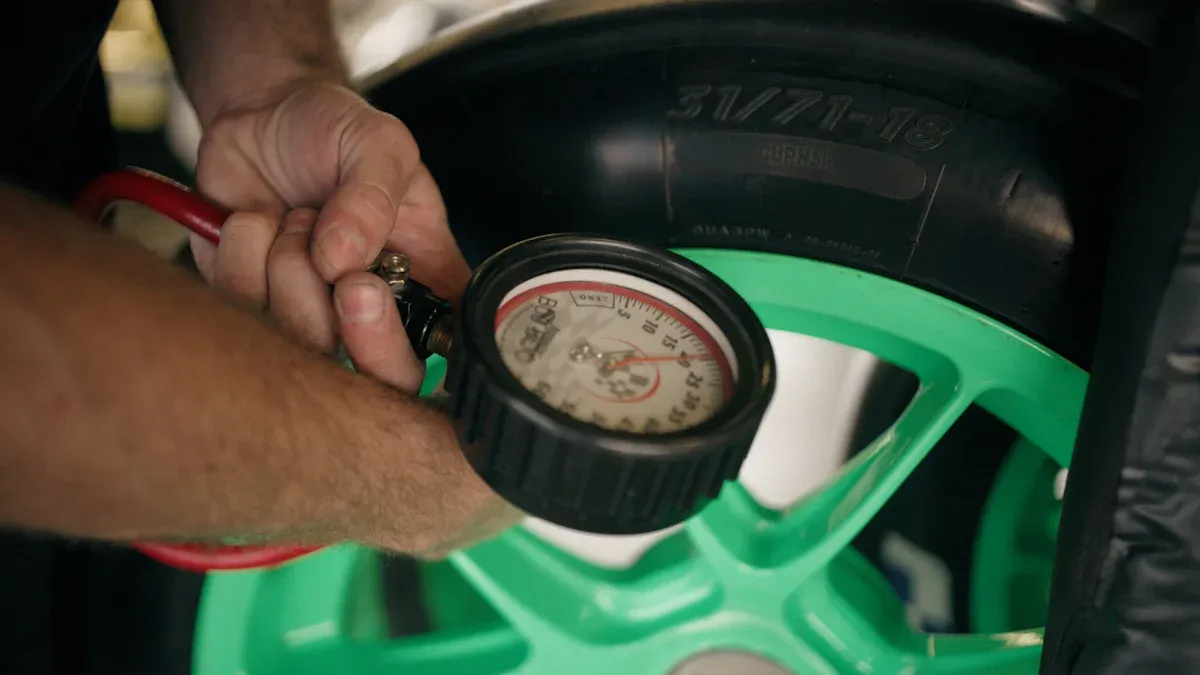
Inspecting the Valve Core
You should inspect your valve core and valve stem regularly to keep your tires in good condition. Most experts recommend checking these parts every time you rotate or replace your tires. You can also do a quick visual check about once a month when you look at your tire tread. During these checks, look for cracks or stiffness in the rubber part of the valve stem. If you see any damage, you may need to replace the part. When you buy new tires, ask your technician to inspect the valve stems and TPMS sensors. Good quality valve caps help prevent air loss if the valve core fails. After five years of use, have a specialist inspect your tires and valve components every year.
- Inspect valve stems and cores during every tire service.
- Check valve stems monthly for cracks or rigidity.
- Replace valve cores and stems when buying new tires.
- Use quality valve caps to prevent leaks.
- Schedule annual inspections after five years of use.
Tip: Apply a silicone-based lubricant to the valve stem once a year to help it last longer.
Cleaning the Valve Core
Keeping your valve core and valve stem clean helps prevent leaks and keeps your tire pressure steady. You can use a valve core tool with different ends for cleaning and maintenance. The forked end removes or installs the valve core, while the tapping end cleans the inside threads of the valve stem. Always clean the threads gently to avoid damage. Soapy water works well as a mild cleaning agent. It helps you spot leaks and clean the valve stem without using harsh chemicals. Avoid abrasive cleaners, which can harm the valve core and threads. After cleaning, reinstall the valve core and tighten it just enough to seal. Put the valve cap back on to keep out dirt.
- Use a valve core tool to remove and clean the valve core.
- Clean the valve stem threads gently with the tapping end.
- Use soapy water to check for leaks and clean the area.
- Avoid harsh chemicals or abrasive tools.
- Reinstall the valve core and cap after cleaning.
Removing and Replacing the Valve Core
If you need to replace a valve core, you can do it safely with the right steps. Start by gathering your tools, including a valve core removal tool, a new valve core, and a tire pressure gauge. Work on a flat surface and wear gloves if you want extra protection. Find the valve stem on your tire and remove the cap. Press the valve to let out any remaining air, then use the gauge to make sure the tire is fully deflated. Insert the valve core removal tool into the valve stem and turn it counterclockwise to take out the old core. Check the old core for damage or wear. Place the new valve core into the valve stem and tighten it clockwise until snug. Do not overtighten. Inflate the tire to the recommended pressure. Use soapy water around the valve stem to check for leaks—bubbles mean you need to retighten. Put the cap back on and check the pressure again.
- Gather your tools and prepare your workspace.
- Remove the valve cap and deflate the tire.
- Use the valve core removal tool to take out the old core.
- Inspect and replace the valve core if needed.
- Install the new core and tighten it.
- Inflate the tire and check for leaks.
- Replace the valve cap and verify tire pressure.
Note: Keeping spare valve cores and a valve core removal tool in your car can help you handle quick repairs. Regular maintenance costs less and takes less time than emergency repairs, which often require special kits and more effort. Learning about tire valve stem types can also help you choose the right parts for your vehicle.
Tips for Preventing Common Issues
You can avoid many common problems with your tire valve core by following a few simple steps. These tips help you keep your tire in good shape and prevent leaks or pressure loss.
- Always use a valve cap and tighten it securely. The cap keeps dirt, sand, and water out of the valve core. If debris gets inside, it can cause the valve to clog or leak. A missing cap makes your tire more likely to lose air.
- After using a sealant, clear any leftover material from the valve. You can do this by blowing air through the valve or pressing the pin for a few seconds. This step stops the sealant from clogging the valve core and keeps your tire working well.
- If you notice the valve core is clogged, remove it and check for damage. Rinse it with clean water before putting it back. This quick fix helps your tire hold air and prevents slow leaks.
- Replace any damaged valve cores right away. A broken valve core can cause your tire to lose pressure quickly. Keeping a spare valve core in your car makes repairs easier.
- Use mounting solutions that contain rust and corrosion inhibitors. These products protect the valve core from rust, which can make it hard to inflate or deflate your tire.
- Inspect your valve cores and caps often. Look for signs of corrosion, dirt, or damage. Early checks help you spot problems before they affect your tire.
Tip: Make checking your tire valve cores part of your regular tire maintenance routine. This habit helps you catch small issues before they become big problems.
By following these steps, you help your tire last longer and keep your vehicle safe on the road.
When to Replace the Tire Valve Core
Signs of a Faulty Valve Core
You need to watch for clear signs that your tire valve core is not working well. If you notice your tire pressure drops more often than usual, this could mean air is leaking out. Sometimes, you might hear a hissing sound near the valve stem. This sound means air is escaping and your pressure is not staying steady. You can also use a soapy water test. If you see bubbles forming around the valve stem, you have a leak.
Look for these common signs:
- Consistently low tire pressure, even after you refill the tire.
- Visible cracks or dry rot on the rubber valve stem.
- Corrosion or rust on metal valve stems.
- Damaged or missing valve caps, which let dirt and moisture in.
- Difficulty inflating the tire or keeping the pressure at the right level.
If you spot any of these problems, you should check the valve core right away. Regular monitoring helps you catch issues before they get worse.
Risks of Ignoring Valve Core Problems
Ignoring valve core problems can lead to bigger issues. When your tire loses pressure, you risk driving on underinflated tires. This causes uneven wear and makes your vehicle harder to control. You might feel vibrations or notice your car pulling to one side. Your tire pressure monitoring system may also alert you to a problem.
Driving with low pressure can damage your wheel and suspension. You could end up with bent rims or costly repairs. Underinflated tires also lower your fuel efficiency and increase the chance of an accident. Quick action keeps your tires safe and your pressure stable.
Tip: Always respond to tire pressure monitoring alerts. They help you avoid damage and keep your vehicle safe.
Choosing the Right Replacement
When you need to replace a valve core, choose one that matches your tire and driving needs. Make sure the new valve core fits your valve stem and can handle the pressure your tires require. Look for high-quality materials that resist corrosion and wear. If you use a tire pressure monitoring system, pick a valve core that works well with your sensors.
You can ask a professional for help if you are unsure. Using the right replacement keeps your tire pressure steady and supports accurate monitoring. Good valve cores help your tires last longer and keep you safe on the road.
Fortune’s Commitment to Tire Valve Core Quality
Manufacturing Standards and Certifications
You want your tire valve cores to meet the highest standards. Fortune follows strict international guidelines to ensure every product meets your needs. Many leading companies in the industry, such as Haltec Corporation, hold certifications that set the bar for quality. These include:
- ISO/IEC 17025:2017 for laboratory competence
- ISO 14001:2015 for environmental management
- ISO 9001:2015 with Design Certified for quality management
These certifications show a commitment to rigorous standards and careful work processes. Fortune also values recognition from global partners, which highlights their dedication to quality and process control. When you choose Fortune, you know your tire valve cores come from a company that takes quality seriously.
Quality Control and Testing
You depend on your tire valve core to keep your tire safe and reliable. Fortune uses advanced equipment and strict protocols to make sure every valve core works as it should. They use accurate process devices, injection molding machines, assembly lines, and laboratories to support their quality assurance. Every Schrader valve core goes through 100% leak testing, so you can trust it to handle up to 300 PSI. Fortune recommends using professional tools for installation and removal, which helps maintain high standards during every step. This careful approach means you get a tire valve core that performs well and keeps your tire system secure.
Customer Support and Global Service
You deserve support wherever you are. Fortune provides premium tire valve core products and backs them up with honest sales and fast assistance. Their global reach covers markets in places like Jeddah, Estonia, and Colombia. Fortune believes in working together with customers around the world to achieve progress. They offer a structured support system, including phone and email contact, and promise to respond within 24 hours. You can count on Fortune to help you with any tire valve core questions or needs, no matter where you live.
You play a key role in keeping your vehicle safe by caring for your tire valve cores. Regular inspection and timely maintenance help you avoid blowouts, improve fuel efficiency, and extend tire life.
- You lower your risk of flats and accidents.
- You save money by reducing repair costs.
- You help the environment by using less fuel.
| Benefit Category | Explanation |
|---|---|
| Safety | Accurate tire pressure prevents blowouts and improves control. |
| Fuel Efficiency | Proper pressure means better gas mileage. |
| Tire Lifespan | Even wear helps your tires last longer. |
| Cost Reduction | Early fixes keep repair bills low. |
| Environmental Impact | Less fuel use means fewer emissions. |
Fortune remains dedicated to delivering high-quality tire valve cores and excellent customer support, helping you drive with confidence every day.
FAQ
How often should you check your tire valve cores?
You should check your tire valve cores every time you check your tire pressure. Most experts recommend doing this at least once a month. Regular checks help you spot leaks or damage early and keep your tires safe.
Can you replace a tire valve core yourself?
Yes, you can replace a tire valve core with a simple valve core tool. Always make sure the tire is deflated before you start. Follow the steps carefully, and use a new, high-quality valve core for best results.
What causes a tire valve core to fail?
Dirt, moisture, and corrosion can damage your valve core. Over-tightening or using poor-quality materials also leads to failure. Always use a valve cap to protect the core and choose products made from corrosion-resistant metals.
Do all vehicles use the same type of valve core?
Most cars, trucks, and bikes use Schrader valve cores. Some bicycles and specialty vehicles use Presta or other types. Always check your vehicle’s manual or ask a professional to make sure you use the correct valve core.
Why is a valve cap important?
A valve cap keeps dirt, water, and debris out of the valve core. This small part helps prevent leaks and protects the seal. Always replace missing or damaged valve caps to keep your tire pressure steady.
